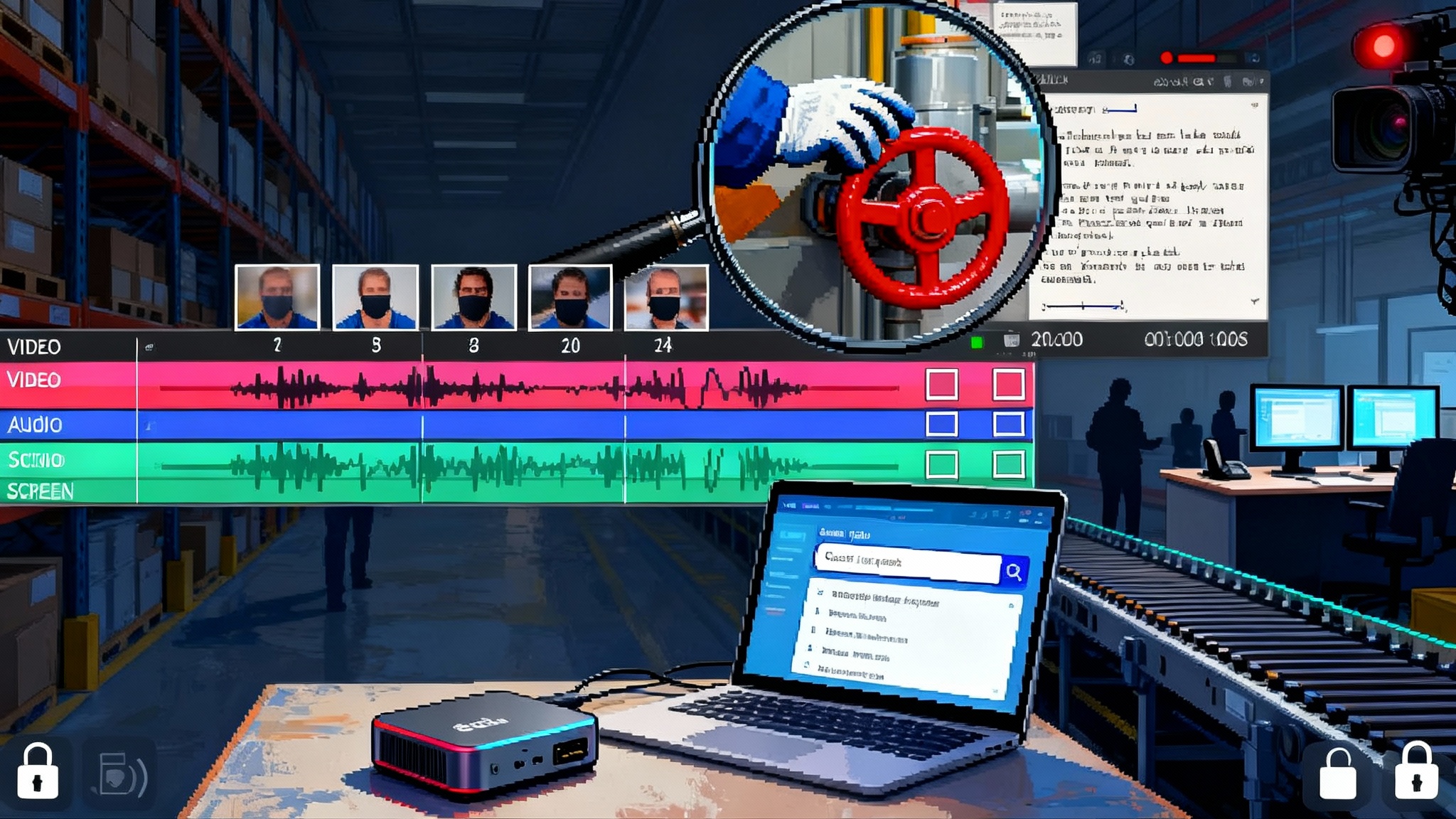Build Your Personal AI Stack in 30 Days: A Field Guide
Most teams buy AI like SaaS and hope for magic. A better path is a simple, personal stack built around your daily work. This guide shows a 30 day plan to capture data, automate routines, and measure real results.

Why a personal AI stack now
If you wait for the perfect platform, you will wait while competitors ship. The winning pattern in 2025 is not a giant AI rollout. It is many small, targeted stacks that compound. A personal AI stack is your set of tools, prompts, and workflows that support how you think and work. It turns scattered ideas, files, and tasks into repeatable outcomes.
You do not need a lab. You need clarity, a plan, and a willingness to iterate in public inside your team. If you want a simple, credible north star for safety as you build, use the NIST AI Risk Management Framework as your checklist for identifying risks and controls.
What a "stack" actually means
For our purposes, a stack is five layers:
-
Capture: how information enters your system. Notes, emails, PDFs, calls, forms, and logs.
-
Memory: how data is stored and retrieved. Folders, tags, vector memory, calendars, and simple databases.
-
Reasoning: the models and prompts that transform inputs into drafts, decisions, and plans.
-
Tools: actions your system can take. Calendars, docs, spreadsheets, ticketing, CRM, and code runners.
-
Guardrails: boundaries, review steps, and logging that keep things safe and reversible.
You can start with what you already have. The goal is flow, not an expensive rebuild.
The 30 day plan
We will move in weekly sprints. Each week ends with something visible you can demo.
Week 1: Outcomes first
-
Define three high value outcomes. Examples: shorten proposal time from two hours to thirty minutes, draft a weekly customer memo in fifteen minutes, triage inbound support within five minutes of receipt.
-
Write a before and after for each outcome. Before is the current process with steps and time. After is the ideal flow in six or fewer steps.
-
Map your inputs. List the sources you touch and what formats they take. Emails, spreadsheets, PDFs, transcripts, tickets, or web pages.
-
Pick one department or function for the first win. Sales, operations, research, or product. One group keeps scope tight and storytelling clear.
-
Create a risk sketch. Note any sensitive data and who can see it. Decide which steps require human review.
Deliverable: a one page brief with outcomes, inputs, and risks. Share it with your manager or team for feedback.
Week 2: Ingestion and memory
-
Standardize capture. You want everything important to land in one or two places. That might be a shared inbox, a tagged folder, or a simple intake form.
-
Normalize formats. Agree on naming, dates, and where metadata lives. Small rules save weeks later.
-
Add light structure. Use a spreadsheet or a simple database with columns for title, source, status, owner, and next action. This is your operations table.
-
Enable search. Organize by tags that mirror your outcomes. For proposals, tag by industry, product, and stage. For support, tag by issue category and severity.
-
Decide what memory your reasoning layer can read. Be conservative early. Keep personal or regulated data out until you have review steps.
Deliverable: a working intake and memory that you can browse, search, and filter.
Week 3: Reasoning and tools
-
Create prompt templates for each outcome. Keep them short, specific, and data aware. Include your desired tone, the audience, and the format of the output.
-
Add tool actions. Connect calendars, docs, spreadsheets, and the ticketing system you already use. Start with read and draft only. Write or send actions come later.
-
Design the handoff. Every workflow should end with a human checkpoint. The human approves, edits, or sends back for another pass.
-
Implement logging. Save the inputs, prompt, and output for every run. Tag the run with the outcome, time saved, and approval result. This becomes your analytics.
Deliverable: a baseline workflow that reads from your memory, drafts the required artifact, and hands it to a human inside your tools.
Week 4: Ship and measure
-
Roll out to a small cohort. Five to ten people is enough. Train them for one hour on the workflow and what good looks like.
-
Run daily. Ask users to use the workflow at least once per day. Repetition creates honest feedback.
-
Log time saved. Use a simple form to capture how long the task would have taken and how long it actually took. Include a confidence rating on quality.
-
Fix the top three friction points every two days. Keep shipping. End the week with a short live demo for the broader team.
Deliverable: a first win you can point to with time saved, quality, and a story.
The components in practice
Capture
Capture starts with where work already happens. Forward key emails to a shared alias. Save files with short, consistent names. Record calls with consent and store transcripts in the same folder as the account notes. For web research, decide on a single clipper that saves title, URL, and a summary.
Good capture is boring and strict. If it is not easy, people will skip it on busy days. Choose defaults that require no thinking.
Memory
Your memory is a set of plain folders and a table. Create a top level folder for each outcome. Inside, create a structure that mirrors your pipeline. For proposals, you might use Leads, Drafts, Approved, and Sent. For support, use Inbox, Triaged, Draft Replies, and Resolved.
Pair the folders with one table that tracks items across stages. Use filters and views instead of more folders when possible. A few computed columns go a long way, like days in stage or number of revisions.
Reasoning
You will write a handful of prompts that carry most of the weight. Treat them like code. Version them and explain their intent. A prompt might specify audience, tone, format, context, and a checklist of must haves. It might also include your brand language preferences and a list of no go phrases.
Keep prompts modular. One prompt summarizes raw notes. Another transforms that summary into a client email. A third turns the email into a task list. Chain them only when you must.
Tools and actions
Start with drafts. Draft a doc, a spreadsheet model, a ticket reply, or a meeting agenda. Once drafts are consistently good, add structured actions like setting fields in CRM or creating tasks with due dates. Keep sends and posts behind a final approve button until your error rate is near zero.
Guardrails and review
Guardrails are simple. Use allowlists for data sources. Hide sensitive fields by default. Require review for sends, posts, or file writes. Log every run with a human owner. You can layer in more controls later, but you will be surprised how far these basics take you.
Safety, privacy, and policy without drama
Treat safety as design, not a blocker. You do not need a hundred page policy to start. You do need a clear agreement on where data comes from, who can see it, and what must be reviewed by a human.
Use the NIST AI Risk Management Framework to map your risks to simple controls. For example, if your risk is leakage of sensitive customer data, your control is to mask or exclude those fields from prompts and to require human review on any outbound drafts that might include that data. If your risk is model hallucination in technical answers, your control is to cite sources and restrict answers to content found in your memory layer. The framework is readable and practical. It helps you have the right conversation with legal and security without slowing down.
Keep a changelog. Every time you modify a workflow, note the change, the reason, and any new guardrail. If something goes wrong, you can roll back quickly.
Measuring impact that leaders believe
Leaders do not buy demos. They buy changes in speed, quality, and cost. Track three numbers per outcome:
-
Time saved per run. The difference between the old process and the new process.
-
Approval rate. The percentage of AI drafts that pass human review without major edits.
-
Cycle time. How long it takes to move an item from intake to done.
Show these numbers weekly. Add one or two short quotes from users. Keep it human and specific.
Run small experiments. Change one variable at a time, like the prompt wording or the input format. Run twenty samples and compare approval rates. Keep the winning variant and log the result.
Starter workflows you can copy today
Sales follow up in under ten minutes
-
Capture call notes and transcript.
-
Use a prompt that turns transcript plus opportunity notes into a three paragraph email with next steps and a soft ask.
-
Draft in your email tool as a saved draft with a consistent subject.
-
Human reviews and sends. Track time saved and reply rate.
Customer support triage with clarity
-
New tickets land in the Inbox view of your table.
-
A triage prompt assigns category, severity, and suggested response snippets.
-
The system creates a draft response and a checklist for the agent.
-
Agent approves, edits, or escalates. Log approval and time saved.
Weekly research brief for product
-
Clip five to ten items into the Research folder with tags for topic and source.
-
A prompt summarizes each clip into three bullet insights and extracts any metrics.
-
A synthesis prompt produces a one page brief with a TLDR, highlights, and risks.
-
PM reviews and posts to the team channel. Track open rate and feedback.
Hiring pipeline helper
-
Resumes land in a folder and are logged in your table.
-
A prompt extracts skills, recent roles, and a one sentence pitch.
-
The system suggests next steps and a tailored screen question.
-
Recruiter reviews and approves. Track time to first touch.
Common pitfalls and how to fix them
-
Vague outcomes. If you cannot measure it, you cannot improve it. Rewrite the outcome with a unit and a target.
-
Too much architecture. People want drafts that save them time. If you do not have a draft in week three, you are overbuilding.
-
Messy inputs. Garbage in produces busywork. Fix capture and naming before adding more models.
-
No review gate. Early sends without review will break trust. Keep a human in the loop until your approval rate is stable.
-
Silent rollout. AI that nobody uses dies quietly. Train a small cohort and ask for daily use. Thank power users in public.
-
One giant prompt. Break work into steps. You will get better outputs and clearer debugging.
Provenance and trust in outputs
When your stack creates content for customers, provenance matters. Add lightweight markings that indicate when content is AI assisted and how it was reviewed. If your company is ready for it, explore the Content Credentials standard for embedding tamper evident metadata in images and documents. Start with internal documents and later extend to external assets as policy matures.
Change management for busy teams
You do not need a transformation program. You need a working rhythm.
-
Monday: review metrics from last week and pick one friction to fix.
-
Tuesday and Wednesday: build and test the fix with two users.
-
Thursday: ship to the cohort.
-
Friday: five minute demo and a two sentence note to the broader team.
Repeat. Share small wins often. Someone will ask to join the cohort. That is your cue to expand to the next outcome.
What to automate and what to keep human
Automate the steps that are consistent, slow, and measurable. Drafting repetitive emails, summarizing meetings into tasks, classifying support tickets, and synthesizing research are strong candidates.
Keep human judgment where stakes are personal or strategic. Pricing changes, final offers, sensitive customer replies, or anything that alters legal terms should always have a human owner. Your stack should make those humans faster and clearer, not replace them.
The next 90 days
After your first 30 days, you will have one working outcome and a playbook. Over the next quarter, expand to two more outcomes. Add richer memory like structured knowledge bases. Introduce safe write actions for low risk tasks. Tighten your guardrails where needed and prune prompts that do not earn their keep.
If you can show three outcomes with clear time savings and quality, you will not need to sell AI anymore. People will ask for it.
A quick checklist to get moving
-
Three outcomes with before and after.
-
A simple intake and a shared operations table.
-
Two prompt templates per outcome, versioned and explained.
-
Draft only actions connected to your daily tools.
-
A human review step before anything is sent or posted.
-
Logging of inputs, prompts, outputs, and approvals.
-
Weekly metrics shared with a short note and a demo.
If you start today, you can demo your first win in four weeks. Keep it small and real. The compounding comes from doing it again next month with less friction and more trust.








